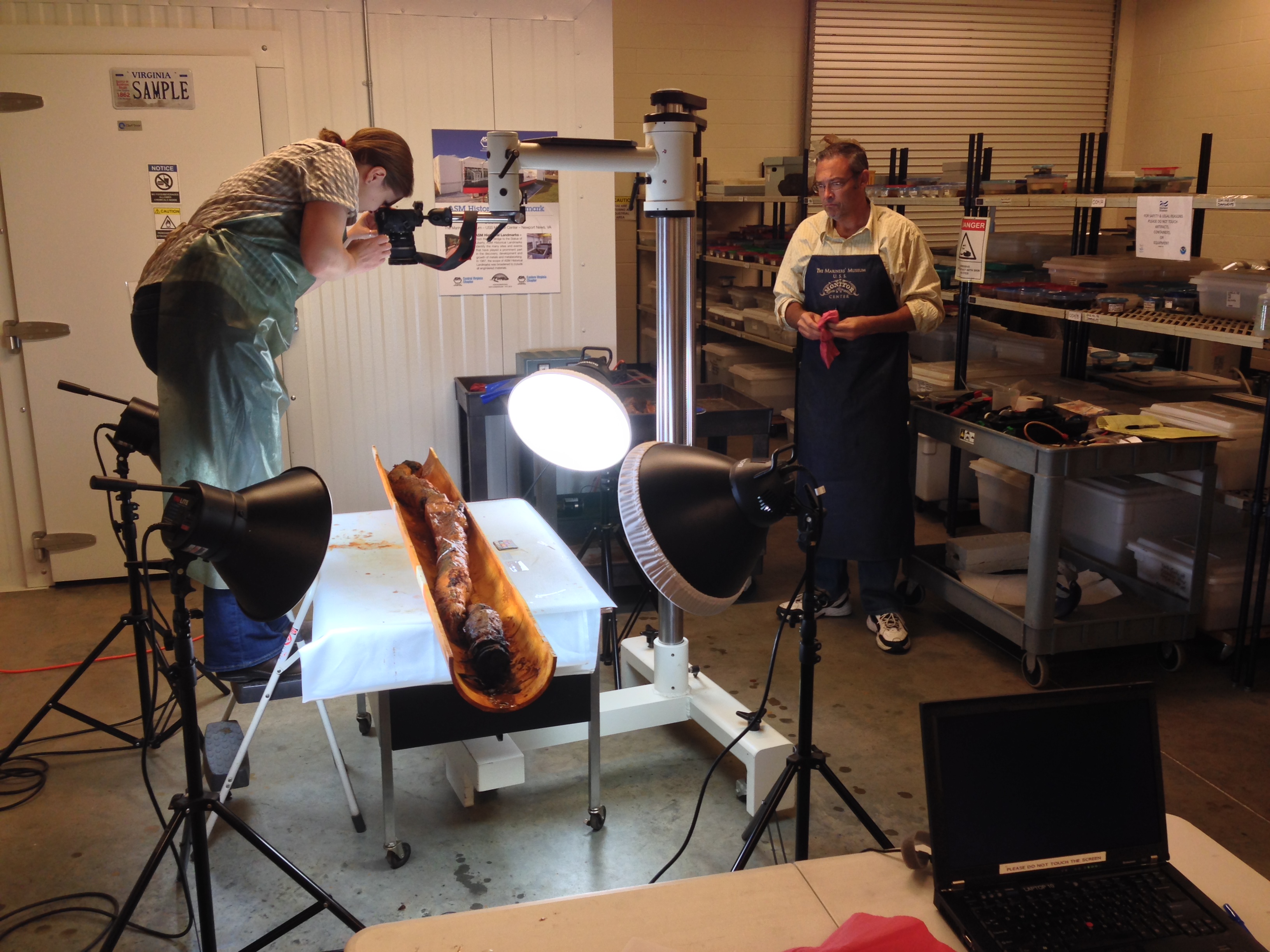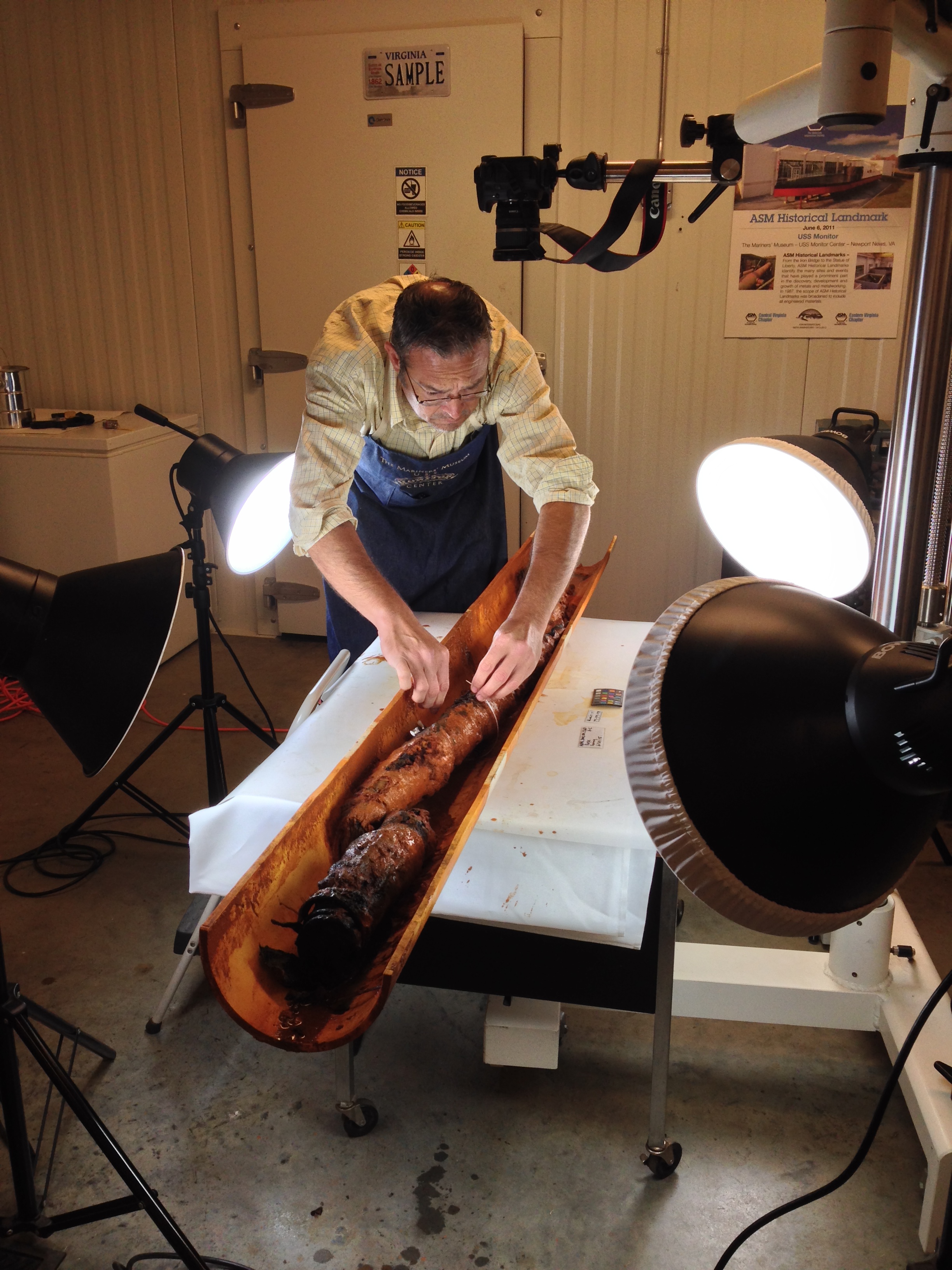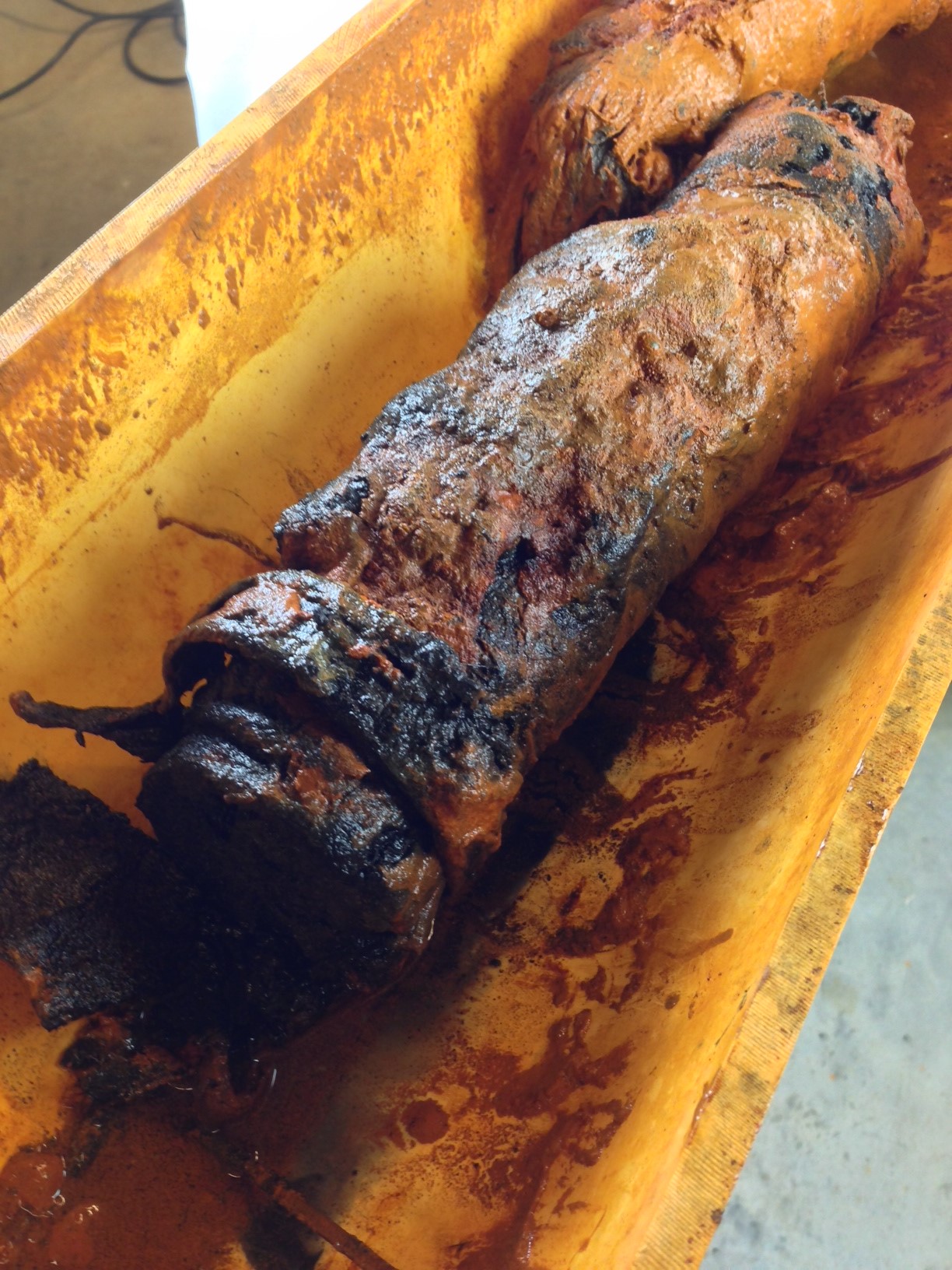The USS Monitor Collection at The Mariners’ Museum consists of nearly 1,500 individual artifacts that collectively weigh over 200 tons. That’s a very significant collection in terms of number and weight. Most people imagine heaps and stacks of wrought iron and cast iron when they hear these figures. Heck, the term ironclad makes it difficult to imagine any other construction material. But did you know that the USS Monitor Collection consists of many materials other than just wrought and cast iron?
In terms of metals objects we have copper, brass, bronze, lead, tin, silver, gold, and other alloys in addition to iron. We also have scores of organic objects like wood, rope, leather, wool, cotton, foodstuffs, rubber, bone, oil, canvas, and other unique materials. We can safely move metal artifacts through wet treatment in ambient conditions with varying temperature and humidity. But our organic materials require cool and dark conditions for optimum storage and treatment. Therefore, we store them in a large walk-in cooler at approximately 40-degrees Fahrenheit.
Why? Sensitive and fragile organic materials are more prone to problems when not properly stored and treated. Warm temperatures and bright light will promote degradation; cool dark temperatures will inhibit or minimize problems. So we seek to maintain conditions that promote more effective preservation.
Think about it this way: most people utilize a refrigerator in their home or apartment to extend the life of their food. The cold, dark conditions inside a refrigerator slow the growth of micro-organisms (bacteria, yeast, mold, etc.) that ultimately lead to the decay of the food. This principle is no different than what we experience in our lab. Our organic artifacts are essentially composed of cells, much like the composition of the food we eat. And keeping these fragile objects cold and dark minimizes the growth and proliferation of those nasty things that could ultimately consume and degrade the artifacts.
We survey the USS Monitor Collection on a regular basis to keep track of the conditions of all artifacts in active storage and undergoing treatment. Recently, Kate Sullivan and Mike Saul completed a comprehensive survey of the contents of our large walk-in cooler in the conservation Work Room. Believe it or not this giant fridge contains 513 organic artifacts recovered from the wreck of USS Monitor including rope, wooden gun tool heads, fragments of furniture, remnants of personal garments like a silk scarf, and other material. Some items were recovered individually from the wreck site; others were excavated from heavy layers of sediment within Monitor‘s revolving gun turret after it was removed from the Atlantic Ocean and transferred to The Mariners’ Museum.

The picture above shows Kate and Mike inside the conservation lab Work Room, adjacent to the walk-in cooler (back left). They have removed a large section of breaching tackle from the walk-in cooler to assess and document its present condition, photo-document the artifact, and determine what steps are required next in the conservation process. The information is recorded via laptop (lower right) in a custom database used to track the necessary variables. This massive, thick rope was used to help minimize the recoil of USS Monitor‘s XI-Inch Dahlgren guns and maneuver them within the tight confines of the revolving gun turret. NOAA archaeologists removed this section of breaching tackle from the turret during initial excavations.

In this picture, Mike is loosely attaching a new stainless steel tag containing the artifact’s official accession number around the artifact with a plastic zip-tie. These modern materials are particularly resistant to decay in wet conditions commonly found when conserving marine-recovered artifacts for long periods of time, which is important when keeping track of nearly 1,500 individual artifacts that actually break down into tens-of-thousands of sub-components. Imagine placing labels written in marker on 200 tons of artifacts only to find that the ink faded over the course of a year in wet storage or treatment — it would be a nightmare to accurately and specifically identify many of the artifacts which are nearly identical in appearance without durable, long-lasting labels containing all pertinent collection accession information. Our stainless steel labels with stamped numerals and letters are attached with chemical-resistant plastic zip ties and they eliminate that concern.

Note the significant iron staining that covers this particular length of breaching tackle and the large PVC cradle that we use to support the artifact. Obviously organic rope does not rust, but this heavy layer of iron staining resulted from exposure of the breaching tackle to the rusty conditions inside USS Monitor‘s corroding wrought iron gun turret at the bottom of the ocean. Iron oxide (rusty corrosion gunk) penetrated nearly every object on the wreck site, subsequently turning everything from its original color into various shades of red, orange, and brown. Removing this problematic layer of iron staining is just one of a dozen future critical steps that a conservator must handle in order to arrest decay and promote long-term preservation of the breaching tackle in a stable exhibit environment.
Kate is bubbling with excitement now that she and Mike have completed the organics survey and she wants to share her enthusiasm and many amazing pictures with you. Keep an eye open in the near future for her aptly titled series of upcoming posts, “Things We Found in the Fridge”. It’s gonna be cool…